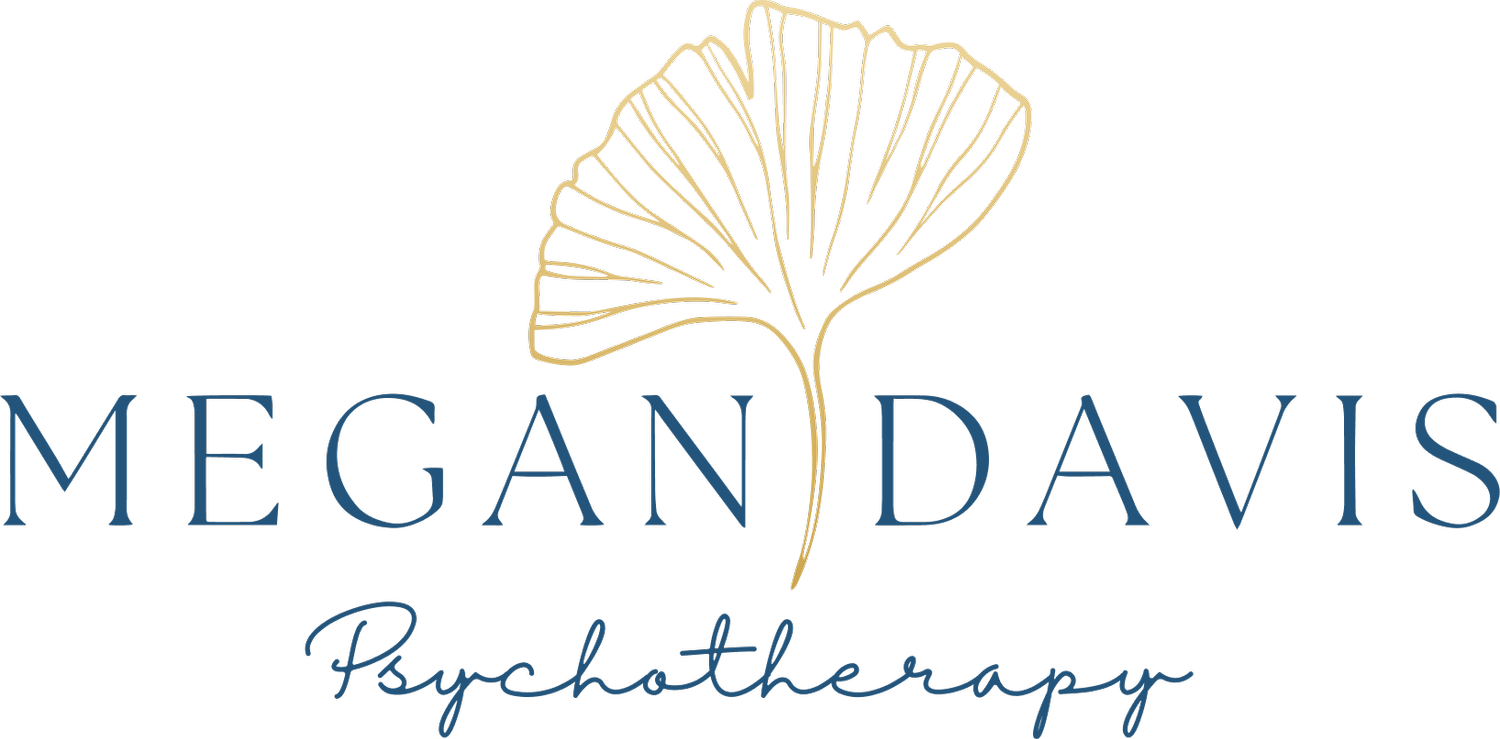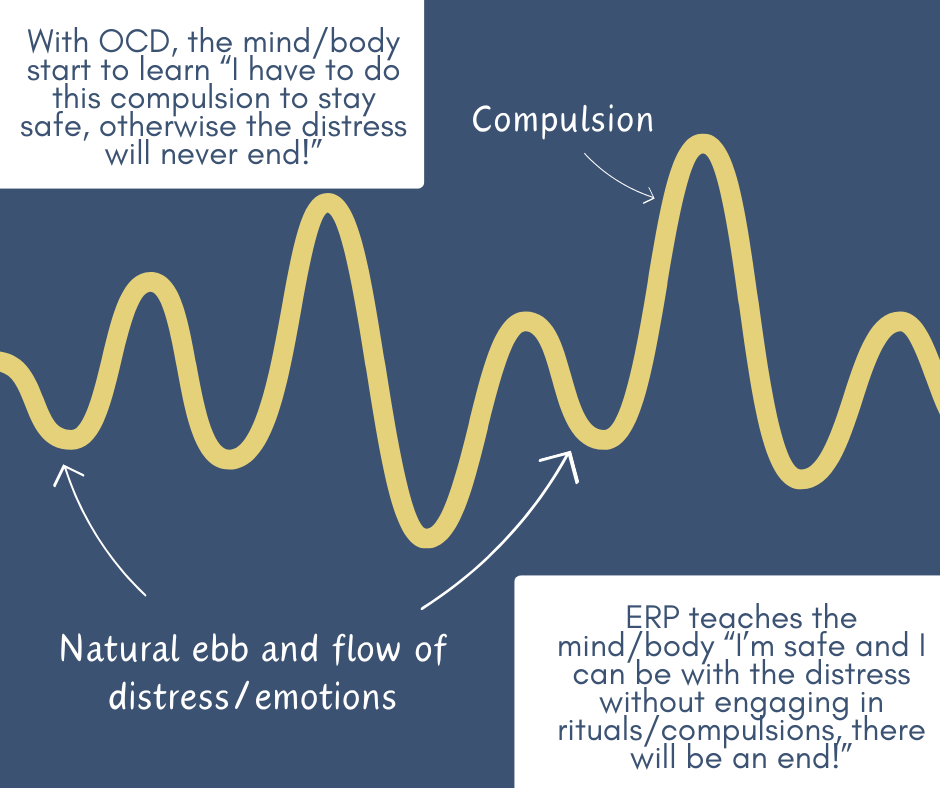Exposure and Response Prevention ERP for OCD
Whether you have recently been diagnosed with Obsessive-Compulsive Disorder (OCD) or suspect that your symptoms aren’t just anxiety, it’s important to know that traditional talk therapy is oftentimes ineffective and for some, can even make your symptoms worse. Exposure and Response Prevention (ERP) is a well-researched approach to addressing symptoms of OCD and is considered the “gold standard” treatment due to individuals experiencing significant improvements in their symptoms over time.
Exposure and Response Prevention consists of:
Exposure or intentionally exposing yourself to different situations, thoughts, images, and physical sensations that trigger anxiety/distress and/or the obsessions. These tend to be experiences that have been actively avoided so as to not trigger the obsessions.
Response Prevention refers to the active decision to not engage in any compulsions/ritualistic behaviors while experiencing obsessions.
The OCD Cycle and where ERP fits in.
How is Exposure and Response Prevention different than traditional talk therapy?
Exposure and Response Prevention takes an inherently different approach from traditional methods of talk therapy. Rather than trying to challenge negative thought patterns, stop unwanted thoughts, or figure out the root of the thoughts, ERP interventions aim to disengage from the unwanted thoughts, images, sensations, or urges.
Here’s the problem:
Individuals experiencing OCD start engaging in compulsions when distress is starting to increase. Their minds and bodies are never able to learn that the distress will peak and eventually start to decrease or plateau without engaging in compulsions. This is a natural process called habituation that we do on a daily basis whether we’re aware of it or not. For example, think about the scent of your laundry detergent - you likely don’t notice it after initially getting dressed due to habituation, but others nearby will likely notice the scent. While traditionally the goal of Exposure and Response Prevention was to increase habituation to feared experiences and ultimately reduce distress, there is increasing evidence that being able to “sit with” or open up to the discomfort is more functional for longer-term outcomes (Abramowitz, 2018).
Exposure and Response Prevention (ERP) can be a very impactful treatment for symptoms of Obsessive-Compulsive Disorder. While it improves outcomes for those navigating the debilitating symptoms of OCD, it might not be for everyone. The process can be challenging and take a significant amount of courage, however I’ve seen the positive short and long-term affects ERP has had on the lives of my clients.


